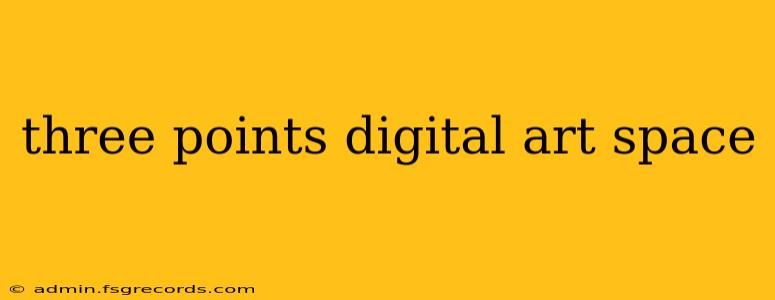Three Key Points Defining the Digital Art Space
The digital art space is rapidly evolving, blurring the lines between traditional art forms and cutting-edge technology. Understanding its defining characteristics is crucial for both artists and enthusiasts. Here are three key points that encapsulate the current state of this dynamic field:
1. The Democratization of Art Creation and Distribution
One of the most significant shifts in the art world is the democratization enabled by digital tools. Previously, aspiring artists faced significant hurdles in accessing resources like high-quality materials and exhibition spaces. The digital realm removes these barriers. Affordable software, readily available online tutorials, and diverse online platforms allow anyone with a computer and an internet connection to create and share their digital artwork. This accessibility has led to a surge in creativity and a vastly expanded pool of artists from all backgrounds and experiences. The ease of distribution, via social media, online galleries, and NFT marketplaces, further expands the reach of digital art, connecting artists with a global audience far beyond the limitations of physical galleries. This shift has fostered a vibrant and inclusive community, fostering collaboration and pushing creative boundaries.
2. The Rise of NFTs and the Blockchain's Impact
The introduction of Non-Fungible Tokens (NFTs) has profoundly impacted the digital art space. NFTs offer a way to authenticate and verify ownership of digital artworks, transforming them from easily replicable files into unique, collectible assets. This has created new markets and revenue streams for artists, allowing them to directly monetize their creations and build a dedicated following. The underlying blockchain technology provides transparency and immutability, adding a layer of trust to the process. While controversy surrounds the environmental impact and speculative nature of some NFT projects, the technology’s impact on the validation and ownership of digital art remains undeniable. It's a powerful force shaping the future of how art is created, owned, and traded. This, in turn, influences the value and prestige associated with digital artwork.
3. The Blending of Art Forms and Technological Innovation
The digital art space is characterized by a constant evolution and integration of new technologies. We're seeing the blending of traditional art techniques with digital tools, and the emergence of entirely new forms of artistic expression facilitated by technological advancements. AI art generators, VR/AR experiences, and interactive installations are pushing the creative boundaries and challenging our understanding of what constitutes "art." This interdisciplinary approach not only fosters innovation but also attracts artists from diverse backgrounds, broadening the range of creative styles and approaches. The resulting works often transcend traditional mediums, engaging audiences on multiple levels through interactive elements and immersive experiences, reflecting the ever-increasing technological sophistication of our society and the creative ways artists are adapting to this environment.
In conclusion, the digital art space is a dynamic and evolving landscape shaped by the democratization of art creation, the impact of NFTs, and the continuous integration of technological advancements. Understanding these three key points provides crucial insight into the present and future of this exciting field.

